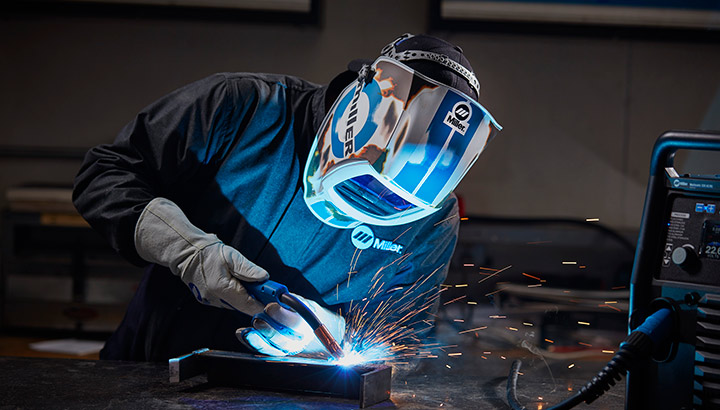The Ultimate Overview to Welding WPS Procedures: A Comprehensive Summary for Welders
In the intricate globe of welding, Welding Treatment Requirements (WPS) offer as the foundation of making sure quality, consistency, and safety and security in welding procedures (welding WPS). As we dive right into the numerous elements of a WPS and check out the complexities of credentials and qualification, we will certainly uncover the important role these procedures play in the world of welding.
Relevance of WPS Procedures
Comprehending the importance of Welding Procedure Requirements (WPS) treatments is essential for guaranteeing the quality and integrity of bonded frameworks. WPS treatments function as a roadmap for welders, describing the necessary actions, specifications, and materials required to achieve an audio weld. By adhering to WPS standards, welders can ensure uniformity in their work, leading to dependable and structurally audio welds.
Among the key reasons why WPS treatments are vital is their role in maintaining weld top quality and stability. Complying with the specified welding criteria and techniques outlined in the WPS aids stop defects such as porosity, fracturing, or incomplete combination, which can compromise the stamina and sturdiness of the weld. In addition, WPS treatments are essential for making certain compliance with industry standards and codes. By following well-known WPS standards, welders can demonstrate that their job meets the required demands for security and top quality, providing assurance to customers, examiners, and regulative bodies. Basically, the significance of WPS treatments can not be overemphasized, as they are essential to accomplishing regular, top quality welds that fulfill industry requirements and requirements.

Parts of a WPS
A Welding Procedure Specification (WPS) typically comprises essential components that information the specific requirements for implementing a weld, making certain uniformity and high quality in the welding process. The essential components of a WPS consist of vital variables such as base steels, filler metals, interpass and preheat temperatures, welding processes, securing gases, welding positions, and post-weld warmth therapy requirements.
Base steels describe the materials being signed up with, while filler metals are made use of to fill up the gap between the base metals throughout welding. Preheat and interpass temperatures are crucial for controlling the warm input and avoiding concerns like splitting or distortion. The welding procedure describes the specific strategy to be utilized, whether it's gas steel arc welding (GMAW), shielded steel arc welding (SMAW), or another approach. Shielding gases shield the weld pool from atmospheric contamination. Welding positions specify the alignments in which welding can be done. Post-weld heat therapy may be needed to ease stresses and enhance the weld's homes. A detailed understanding of these parts is essential for producing a effective and thorough WPS.

Credentials and Qualification
Having actually established the essential parts of a Welding Procedure Requirements (WPS), the emphasis now changes towards the essential aspects of certification and accreditation in welding practices.

Accreditation, on the other hand, is the official recognition of a welder's qualifications by a relevant here qualification body or company. Welding accreditations are usually based upon the certain welding procedures, products, and settings a welder is certified to article source deal with. Holding a valid welding accreditation demonstrates that a welder satisfies industry requirements and is qualified to carry out welding jobs to the required specifications.
Creating a WPS
To create a Welding Treatment Requirements (WPS) that fulfills market standards, mindful factor to consider of welding procedures, materials, and functional parameters is essential (welding WPS). The primary step in producing a WPS is to recognize the welding procedure to be used, such as gas steel arc welding (GMAW) or protected steel arc welding (SMAW) When the welding process is identified, the following critical element is picking the ideal products, thinking about factors like base metal type, density, and joint layout. Operational criteria such as welding current, voltage, traveling rate, and protecting gas make-up should likewise be thoroughly defined in the WPS.

Applying and Checking WPS
Upon finalizing the comprehensive Welding Treatment Spec (WPS) that thoroughly details welding procedures, products, functional specifications, and quality assurance steps, the focus changes to properly applying and checking the well established procedures. Application includes guaranteeing that all welders involved in the task are familiar with the WPS and follow it thoroughly throughout the welding process. Reliable application and tracking of the WPS are vital for making sure the stability, strength, and security of the welded joints, eventually contributing to the general success of the welding project.
Verdict
In conclusion, understanding and complying with Welding Procedure Requirements (WPS) is essential for welders to make certain quality, consistency, and security in their work. By understanding the parts of a WPS, obtaining appropriate certifications and certifications, developing detailed procedures, and executing and checking them successfully, welders can enhance their abilities and proficiency in welding practices. Sticking to WPS procedures is essential for generating top notch welds and conference sector criteria.
In the intricate world of welding, Welding Treatment Specs (WPS) serve as the foundation of making certain top quality, consistency, and safety and security in welding procedures. The welding next page procedure describes the particular strategy to be utilized, whether it's gas steel arc welding (GMAW), secured metal arc welding (SMAW), or one more approach.To establish a Welding Procedure Spec (WPS) that meets market standards, careful factor to consider of welding processes, materials, and operational specifications is essential. The first step in developing a WPS is to determine the welding procedure to be made use of, such as gas metal arc welding (GMAW) or protected metal arc welding (SMAW)Upon completing the extensive Welding Procedure Spec (WPS) that thoroughly details welding procedures, materials, functional criteria, and top quality guarantee steps, the focus moves to successfully carrying out and checking the well established procedures.